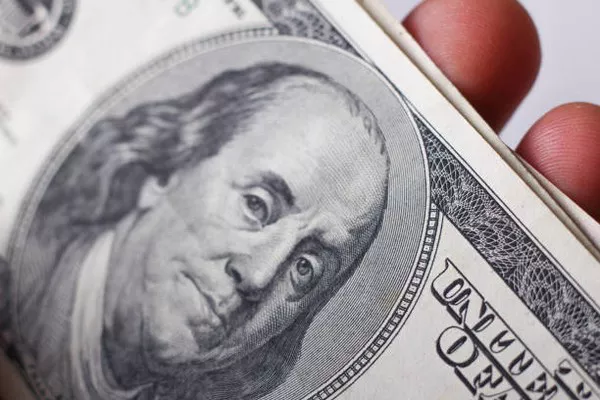In the complex world of global finance, few currencies hold as much sway as the U.S. dollar. As we witness the gradual but consistent strengthening of the greenback in recent times, it becomes imperative to delve into the factors that contribute to this phenomenon. This article aims to explore the forces behind the appreciation of the U.S. dollar and its potential implications on the global economy.
Factors Driving the Strength of the U.S. Dollar
Economic Growth and Stability: The foundation of any currency’s strength lies in the economic performance of its respective country. The United States, being one of the world’s largest economies, has demonstrated steady growth and resilience, especially in comparison to other major economies. Robust economic indicators such as GDP growth, employment rates, and consumer spending have bolstered investor confidence in the U.S. economy, consequently leading to an increase in demand for the dollar.
Monetary Policy and Interest Rates: The monetary policy set by the Federal Reserve plays a pivotal role in shaping the value of the U.S. dollar. In recent times, the Federal Reserve has adopted a hawkish stance by gradually increasing interest rates to combat inflationary pressures. Higher interest rates make U.S. assets more attractive to foreign investors seeking better returns, thus driving up the demand for the dollar.
Safe-Haven Status: The U.S. dollar has long been regarded as a safe-haven asset during times of geopolitical uncertainty or economic turmoil. In periods of global instability, investors flock to the dollar as a shelter from market volatility, further reinforcing its value. Recent geopolitical tensions and the lingering effects of the COVID-19 pandemic have heightened the appeal of the dollar as a safe-haven asset.
Trade Surplus and Capital Flows: The U.S. trade balance, although often in deficit, benefits from the fact that the dollar serves as the world’s primary reserve currency. This status facilitates international trade and investment flows denominated in dollars, creating a constant demand for the currency. Additionally, foreign countries and central banks hold vast reserves of U.S. dollars, further underpinning its value in the global market.
Relative Strength Compared to Other Currencies: Currency exchange rates are influenced by relative strength, as investors evaluate the performance of one currency against another. The appreciation of the U.S. dollar can be attributed to its perceived strength compared to other major currencies like the euro, the yen, or the pound sterling. Factors such as diverging monetary policies, economic outlooks, and market sentiment all contribute to the comparative strength of the dollar.
Implications of a Strong Dollar
Export Competitiveness: While a strong dollar signifies economic strength, it can have adverse effects on export-oriented industries. A robust dollar makes U.S. goods more expensive for foreign buyers, potentially leading to a decrease in exports and weighing on the competitiveness of American businesses in the global market.
Inflation and Import Costs: A strong dollar can dampen inflationary pressures by reducing the cost of imported goods and raw materials. However, this can also lead to lower profit margins for domestic producers who rely on imported inputs. Additionally, a prolonged period of excessive dollar strength may stifle inflation to the extent of hampering economic growth.
Investment Flows and Asset Prices: The strength of the U.S. dollar impacts the flow of capital both domestically and internationally. Foreign investors may find U.S. assets more appealing during periods of dollar appreciation, potentially driving up asset prices in the country. On the flip side, U.S. investors may seek opportunities abroad when the dollar is strong, diversifying their portfolios and influencing global investment trends.
Foreign Debt Burden: Countries and corporations that have borrowed in U.S. dollars may face increased repayment burdens when the dollar strengthens. A higher valuation of the dollar means that these entities need to allocate more of their local currency to service their dollar-denominated debts, potentially straining their financial positions.
See Also Is It Better To Pay In Euros Or Dollars Online
Conclusion
The ascendance of the U.S. dollar stands as a testament to the country’s economic prowess and global influence. However, the implications of a strong dollar are multifaceted and warrant careful consideration by policymakers, businesses, and investors alike. As we navigate the complexities of the global economy, understanding the factors driving the strength of the U.S. dollar is essential for anticipating market dynamics and making informed decisions in an interconnected world.
In the ever-evolving landscape of international finance, the trajectory of the U.S. dollar serves as a barometer of economic health and market sentiment. While the current trend may signal confidence in the U.S. economy, it also raises questions about the broader implications on trade, investment, and financial stability. Keeping a watchful eye on the evolving dynamics of the global currency markets will be crucial in adapting to the nuances of a stronger U.S. dollar.
As we move forward, it remains to be seen how the U.S. dollar will continue to shape and be shaped by the intricacies of the global economy. In a world characterized by interconnected financial systems and rapid market developments, the strength of the greenback stands as a cornerstone of stability, influence, and opportunity in the realm of international finance.


